Abandoned Dorset: Cattistock Lodge | Urbex

At the edge of a small Dorset village, barely noticeable from the road and obscured by years of tree growth and a severely crumbling wall, lies this equally crumbling house. Once grand and comprising of multiple buildings and extensive gardens, today Cattistock Lodge is barely standing.
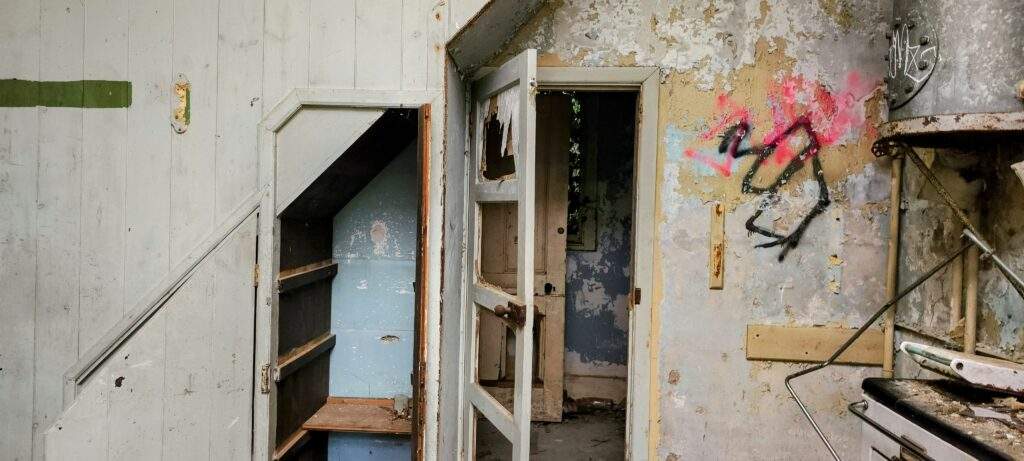
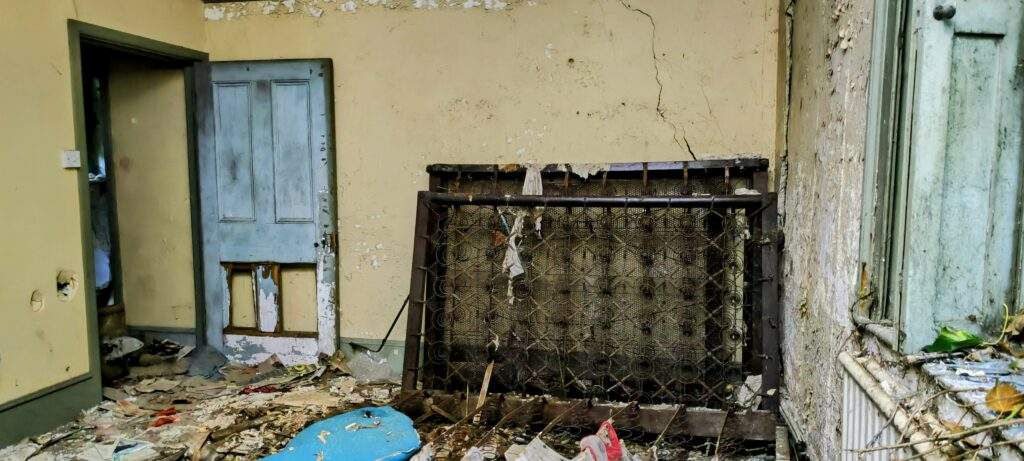
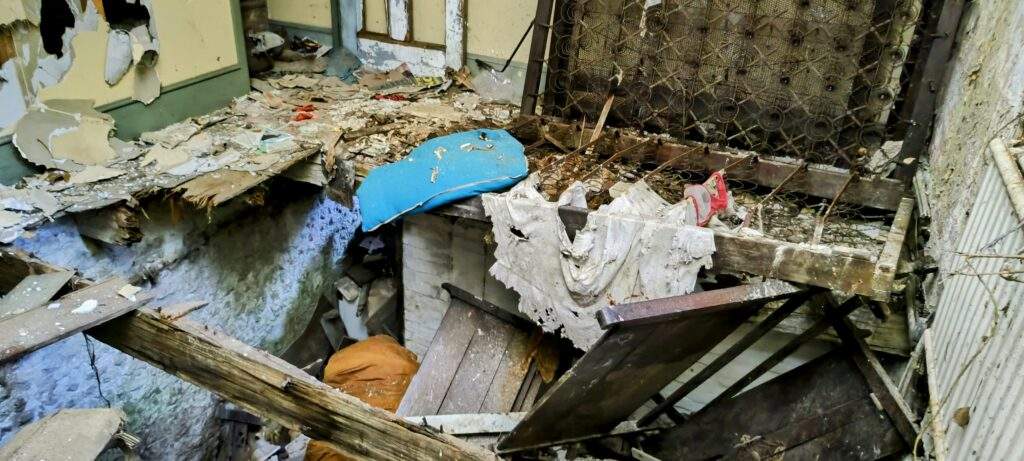

As we ducked through the undergrowth, it was difficult to spot the entrance- the growth of the side of the main part of the house camouflaged it well. Once up a short set of external steps, we were greeted by a room with not much of a floor left. The floorboards which did remain were home to an old oven. Braving the floorboards, we scooted around the oven and into a corridor, which had a utility room at one end and what was once a room at the other. This part of the house no longer had much in the way of floor, ceilings or walls. The room in the middle of the lower floor of the house had held up slightly better, with a fireplace remaining, but no floor.
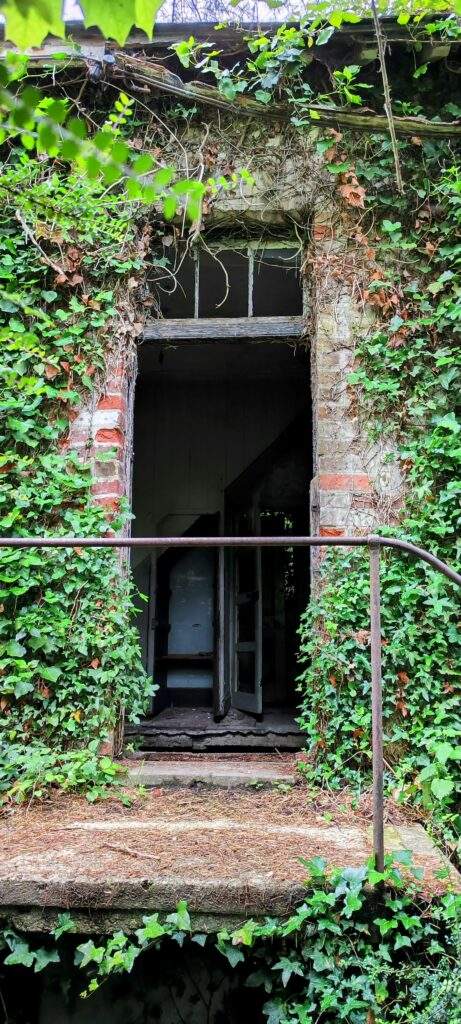
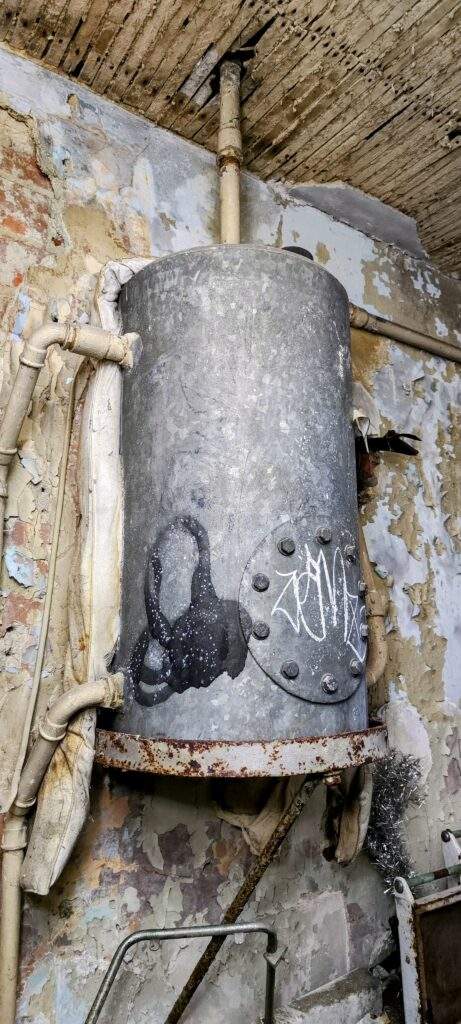



Once we’d tiptoed around this part of Cattistock Lodge, taking time to flick through a few old newspapers and admire the extreme decay and enchanting paint-peel, we worked our way through the overgrown garden. Alongside a few bundles of rubbish and rubble, there was a large two storey building which was now more outside than in- one external wall and much of the roof completely taken by time.
The house was built in the Victorian Era, the estate was once made up of multiple buildings and well-tended gardens. The 1901 census records 14 people living in the house, which at the time was owned by the Sitwell family. There were six servants and a governess. The next inhabitants appear to have been cricketer and archer Henry Hamilton Palairet and his wife and five children, who occupied the house until 1923.



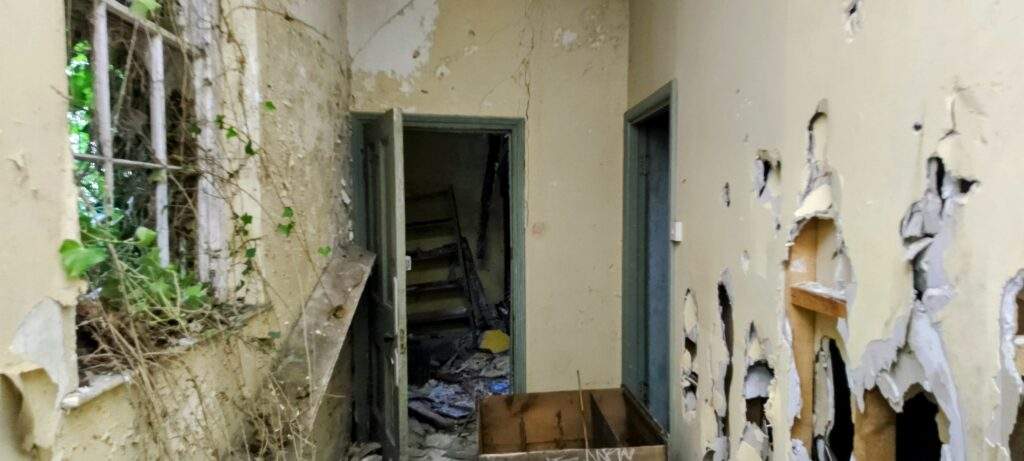
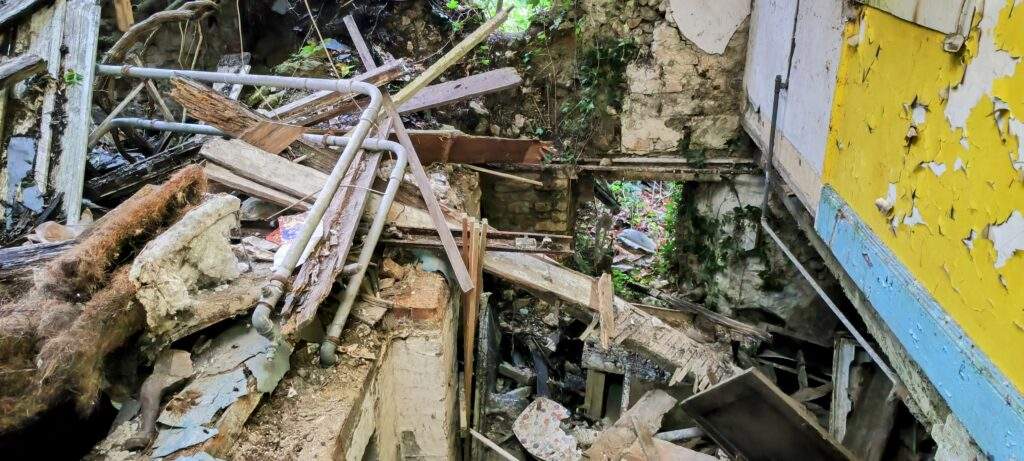

The final inhabitants were the Soulsbys- Percy and Margette who took up residence in 1959, and lived in Cattistock Lodge with their three children- Peggy, Douglas and Sheila. It’s reported that the house was lived in until at least 2011, and potentially up until Peggy Soulsby’s death in 2016. By then the house was already in a state of decay and disrepair, and other reports state that Peggy spent the last five years of her life living with a friend in Kent.
In 1985, whilst Peggy was still living on the estate, there was a planning application to convert the house, staff cottage and outbuildings into six houses and one bungalow and modify vehicular and pedestrian access. The planning application was refused, and it seems that Peggy made no more attempts to modernise or alter the buildings. SInce its abandonment, there have been numerous further planning applications, including in a rejected application in 2021, for the ‘conversion of dilapidated residential dwelling and outbuildings into 7no. dwellings, with the erection of 3no. mews style dwellings.’
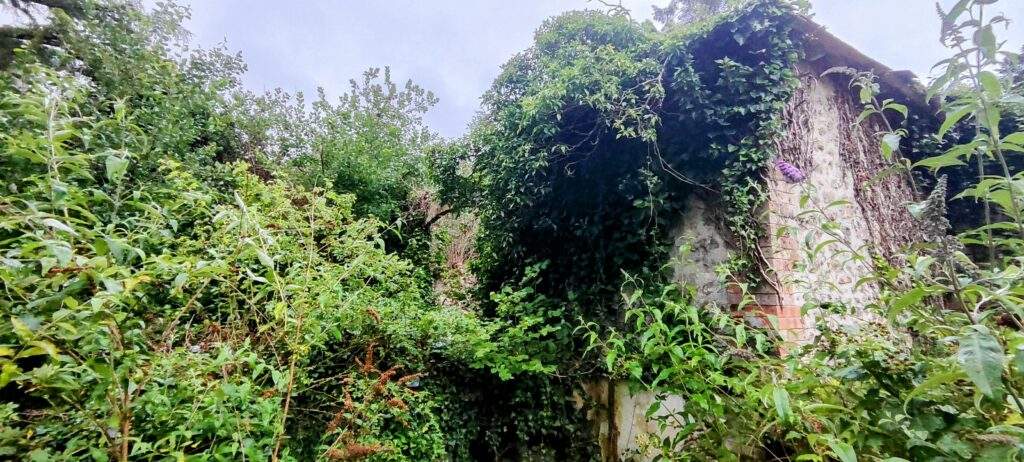
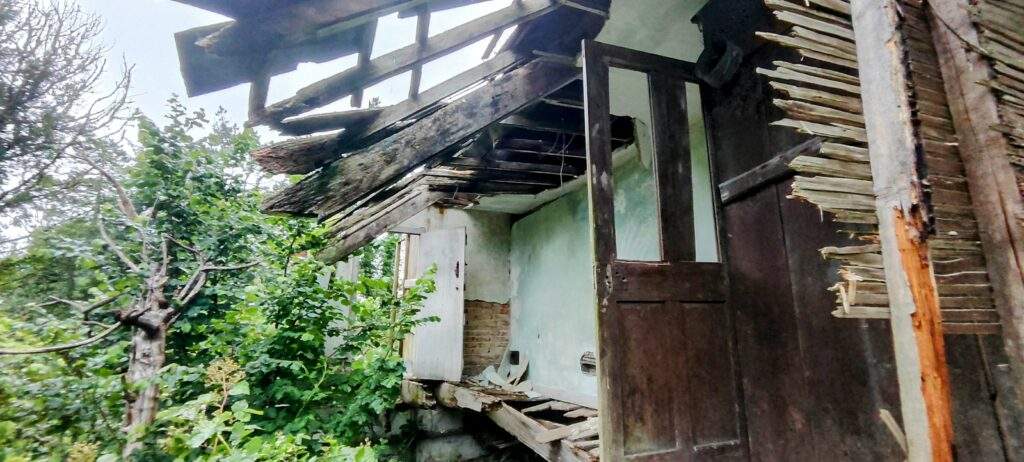
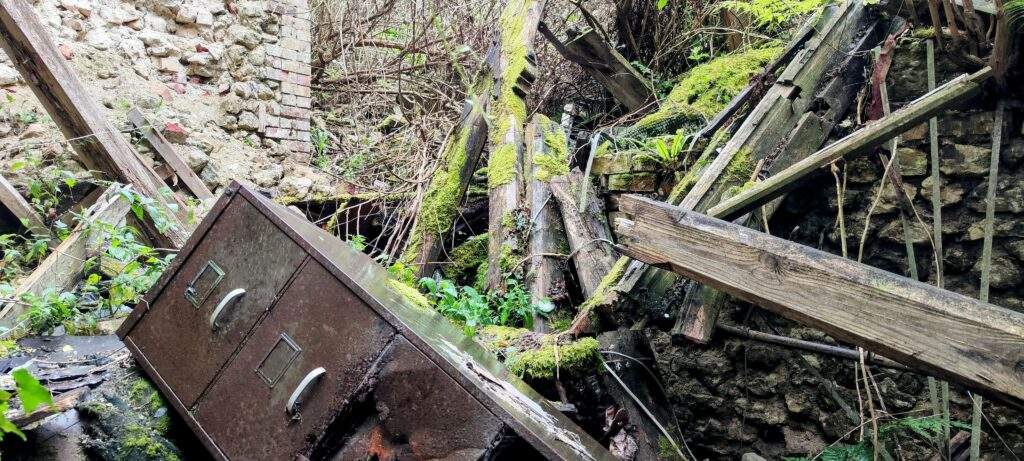
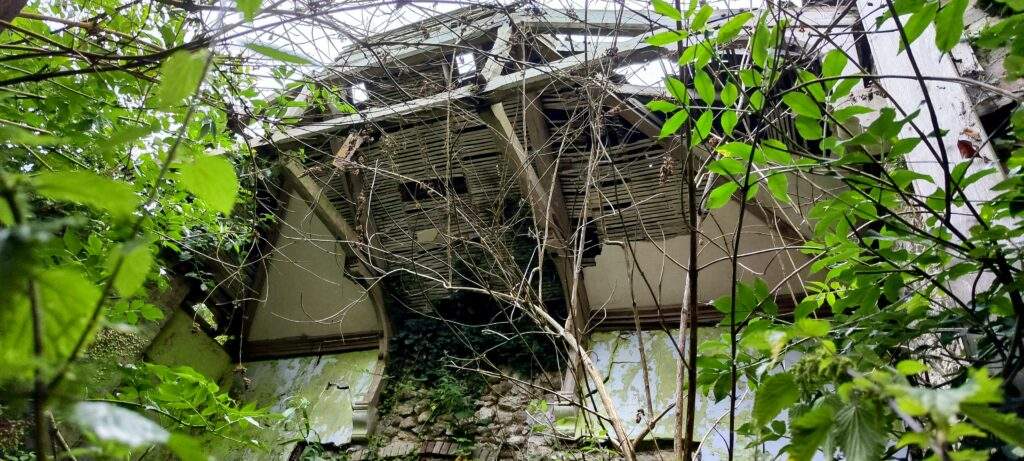
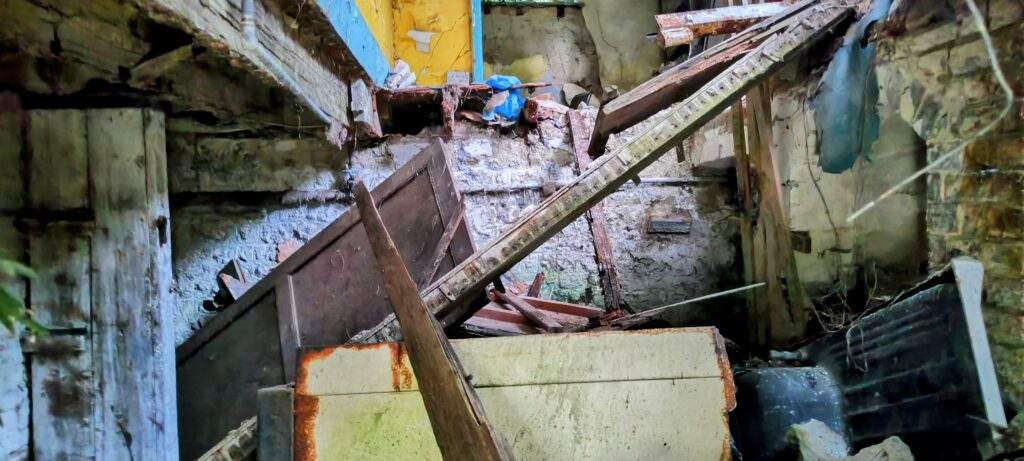
In 2022 a new application was submitted, however no permission has yet been granted. Planning permission is being held up by the presence of bats on the site, with a surveyor stating “Bats are present in the main building on site and bats are foraging and flying through the site. Bat activity surveys have been carried out and a European Protected Species Licence (EPSL) will be required. Greater and Lesser horseshoe bats are using the main building of Cattistock Lodge to roost. Both bat species were seen leaving the building on the SW side through a doorway and two windows, although the surveyors cannot be certain that all bats emerging from the building were seen due to complexity of the building and the inability to see every elevation clearly. These two species together with both Common and Soprano pipistrelle bats were also seen and/or heard commuting through the site.”
In January 2025, a large fire broke out in the abandoned building- Dorset & Wiltshire Fire and Rescue said five crews were sent along with an aerial ladder platform and two water carriers.
Last Updated on 19 January 2025 by Michael

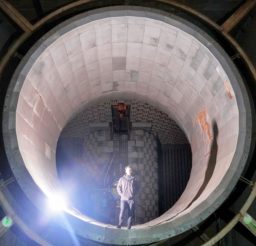


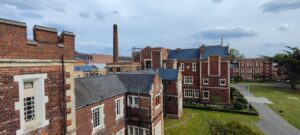
That’s not too many miles away from me. I’ve been there a couple of times now; wish I could’ve seen it in its better days